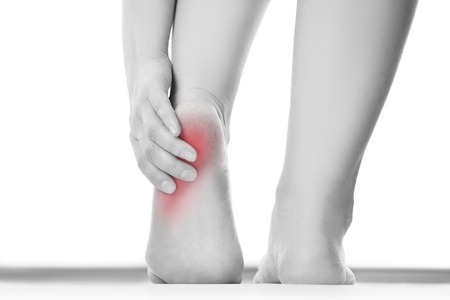
Are you ready for sandal season? Whether you’re a man or a woman, you’ll want to put your best foot forward while you’re out and about. Unfortunately, cold and dry temperatures during the winter months may have left something to be desired where your heels are concerned.
Dry, cracked heels are one of the most common conditions that people complain about. In fact, this condition can become so painful that it becomes necessary to consult with a foot and ankle specialist. If your heels have become like sandpaper, here’s what you need to know.
Dry and Cracked Heels
Dry and cracked heels can become so bad that they actually tear through socks and stockings. You may hear your heels scraping on the floor when you walk. When you notice this condition, take a few steps to remedy it.
What Causes Dry and Cracked Heels?
Dry, cracked heels develop for a few reasons. Athletes and others who are constantly on their feet, like waiters, and avid joggers or walkers, may develop dry and cracked heels. You might also find yourself with dry and cracked heels if you are chronically dehydrated. Exposure to heat, hot water and hard soaps can cause drying and cracking in the heels, as well as walking around in bare feet all the time.
How to Prevent Dry and Cracked Heels
Even if you’re a hermit in the winter, you still need to drink plenty of water and abstain from alcohol if possible. Alcohol often leads to dehydration because your thirst may be satisfied, but your body still hasn’t received the water it needs. Avoid very hot baths, and wear slippers when walking around the house. Apply lotion to the soles and heels of your feet before bedtime.
Healing Dry Heels
There are some ways to heal dry and cracked heels at home. Try soaking your feet in Epsom salts to loosen dead skin. Then gently use a pumice stone on the heels. Immediately after, apply a non-scented moisturizer and put on socks to “seal” in the moisture. If you do this on a few successive days, you may find your heels looking and feeling better. Another treatment is simply to drink more water to ensure your skin is properly hydrated all over. Finally, some supplements may offer benefits, such as Omega-3 and zinc. However, eating a whole, varied diet is always best.
Dealing With Cracked Heels
If your heels have actual cracks or fissures in them, it’s best to consult with a foot and ankle specialist. Deeper fissures and cracks can easily become infected. They may also leave scars if they aren’t treated properly. If you do have cracked heels, you may have something more serious going on besides being exposed to dry winter temperatures. This is another reason why a visit to a podiatrist may be warranted.
Feet health is essential to your overall health. If your ability to be mobile is hindered by dry and cracked heels, you could suffer from being too sedentary. Infections in deep fissures in the heels could also spread through the body. Contact us today to learn more about when it’s okay to treat dry, cracked heels at home and when it’s best to book an appointment.






